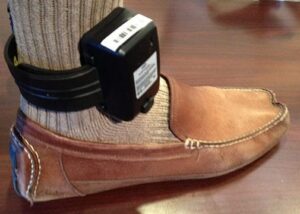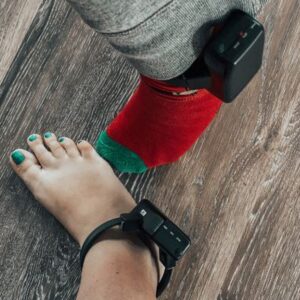Some States Offer Pre-Trial Home Confinement As An Alternative To Incarceration. Will It Work For You?
 Many states are now offering defendants the option of pre-trial home confinement while they await trial.
Many states are now offering defendants the option of pre-trial home confinement while they await trial.
Home confinement options have been available for many years. Recently, pre-trial home confinement or house arrest has been growing in popularity as a way to combat jail overcrowding.
Some defendants choose house arrest because they lack the funds to post bail. They may also have other concerns about the bond process.
The court may offer house arrest may be offered as a bail condition. This means a defendant must participate in a pre-trial home confinement program while out on bond.
How Pre-Trial Home Confinement Or House Arrest Works
 House arrest programs vary. However, almost all of them require participants to wear a special ankle monitor. This ankle monitor tracks at least some of their movements. Modern ankle monitors have GPS technology that allows a court-appointed officer to know where a defendant is at all times.
House arrest programs vary. However, almost all of them require participants to wear a special ankle monitor. This ankle monitor tracks at least some of their movements. Modern ankle monitors have GPS technology that allows a court-appointed officer to know where a defendant is at all times.
A defendant can typically continue to work at their usual workplace after a court officer confirms their employment. The employer may have to keep a log for the defendant to show to the court every week.
A defendant must typically spend much of their time at their home when on pre-trial home confinement. The court may give the defendant a daily curfew. In addition, to a list of limited activities they can do away from home. The court may also may give them an allotment of personal hours when they can travel outside of the home.
Electronic Home Monitoring Pros and Cons
Pre-trial home confinement has its advantages and disadvantages for defendants.
Electronic home monitoring benefits include:
- Maintain steady employment. The ability to work can help prevent the loss of a steady job. Thus, the defendant avoids the financial hardship stemming from financial hardship.
- Electronic Monitoring allows some freedom while awaiting a court hearing. It also offers defendants much more freedom than they would have when awaiting trial behind bars.
Pre-trial home confinement disadvantages include:
- High program cost. Program participants are often charged $350 or more to start their home monitoring programs.
- Less freedom than traditional pre-trial release on bail.
- Stigma. You may worry that your employer will judge you harshly. You may also worry they will stereotype you as a criminal.
In addition, ankle monitors are heavy devices. They can lead to leg discomfort in some people. Some states add recording devices to these bracelets. These ankle monitors also record all conversations the defendant has with others while awaiting their court hearing.
Many people opt for pre-trial home confinement believe they will only be in the program a few short days or weeks. However, these defendants often find themselves wearing the ankle monitors for years.
House arrest does grant a defendant more freedom when awaiting a court hearing. However, traditional release on bail is often a better option. Namely, when maximum freedom is needed to prepare for a trial. In addition, EHM program fees can add up greatly over time and create a financial hardship.
If you need help bailing yourself or a loved one out of jail, call the bail bond experts BailOption Today at